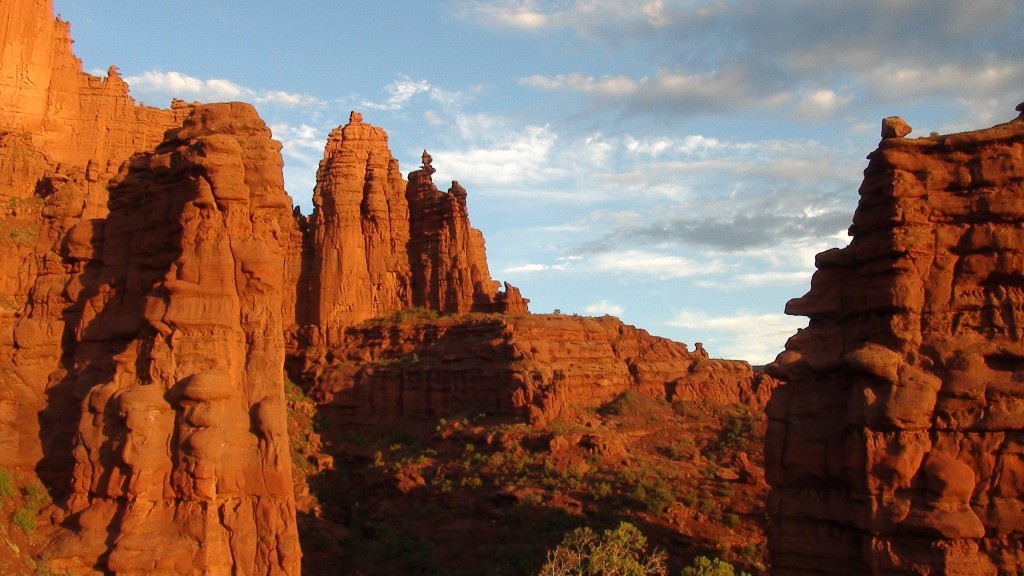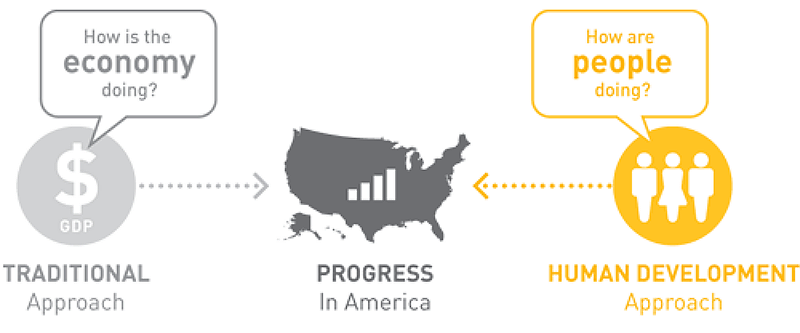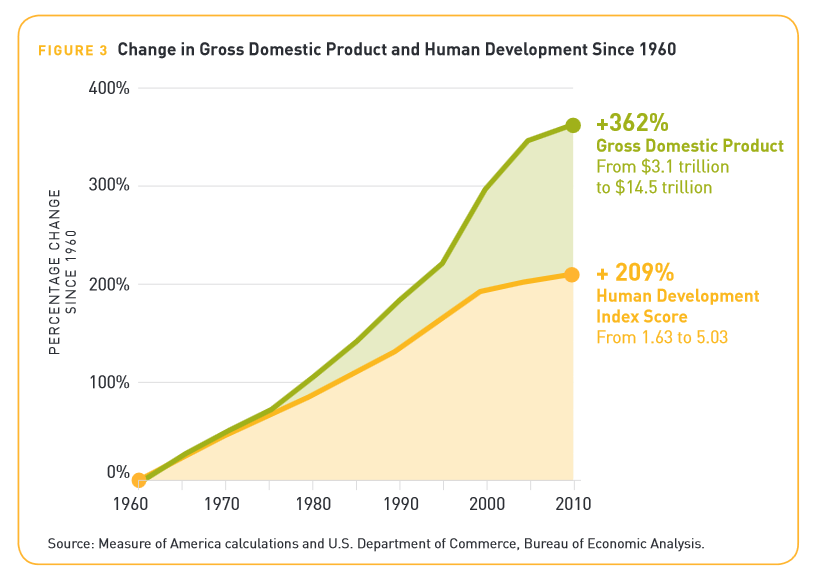Panel Discussion: “Mapping Well-being and Opportunity for Resilient Communities around the World”
October 1, 2014 — Alan Flippen of NY Times’ The Upshot will moderate a discussion hosted by The Municipal Art Society of New York and Measure of America. The panel comprises a diverse group of experts, policy makers, corporate and philanthropic foundations, and non-governmental organizations working on designing policies in regions and cities that improve their livability, their sustainability and the quality of life of the people who live and work within them. Co-Director of Measure of America, Sarah Burd-Sharps, to be featured among the panelists. Location: The Municipal Art Society of New York | 488 Madison Avenue, Suite 1900, 9-11am. Public event. Space is limited. RSVP required. For availability, contact: csmith@mas.org.
Editorial: Behind the Valley ‘Portrait’
September 26, 2014 — Sonoma Index-Tribune
EVENT: Health Data for the Common Good
November 12, 2014 — Measure of America co-directors Kristen Lewis and Sarah Burd-Sharps will be participating in a discussion at the Kaiser Family Foundation’s Conference Center in Washington D.C. The conference, called “Health Data for the Common Good,” is a meeting of public and nonprofit organizations engaged in measurement and online public reporting of U.S. population health and health system performance.
EVENT: Southern California Grantmakers Annual Conference
November 5, 2014 — Measure of America co-director Sarah Burd-Sharps will moderate a panel discussion on resilience at the Southern California Grantmakers Annual Conference. More information here.
EVENT: Mapping Well-being and Opportunity
October 1, 2014 — The Municipal Art Society of New York and Measure of America are convening a roundtable discussion on: “Mapping Well-being and Opportunity for Resilient Communities Around the World.” The event will be held at The Municipal Art Society of New York. Measure of America co-director Sarah Burd-Sharps will be delivering a keynote address.
EVENT: Opportunity Youth Network Second Annual Convention
October 1, 2014 — Measure of America co-director Kristen Lewis will deliver a keynote presentation at the Second Annual Convening of the Opportunity Youth Network in Washington, D.C. The Opportunity Youth Network is part of The Aspen Institute Forum for Community Solutions.
INTRODUCING… MOAB!

“Fisher Towers at sunset” by Greg Schaefer. – Own work. Licensed under Creative Commons Attribution 3.0 via Wikimedia Commons
MOAB is a few things. It’s a place in Utah known for views like this one, “Fisher Towers at sunset”, and for some vicious mountain biking. It’s also known in the historical record as a strip of mountainous terrain in Jordan. This is a stretch but we’re gonna do it anyway: introduce our own MOAB, the Measure of America Blog. A pretty decent set of inspirations as we explore the landscape of human well-being in America, tracking the highs and lows… err.. no. Promise, we won’t stretch it too far.
What is Measure of America?
Measure of America, a project of the Social Science Research Council (SSRC), provides easy-to-use yet methodologically sound tools for understanding the distribution of well-being and opportunity in America. Measure of America’s mission is to tell the story of how American people are doing, not just how the economy is doing. We use publicly available U.S. Census data to measure human well-being on a simple 10-point scale.
The concept underlying our work is called Human Development. The late economist Mahbub ul Haq, working with Nobel Laureate Amartya Sen developed the idea in response to government reliance on the commonly used measure of gross domestic product (GDP). They demonstrated that not only that GDP was an inadequate proxy for well-being, but also that attaching such outsized importance to it encouraged governments to measure, value, and even do the wrong things.
The resulting Human Development Index, is known as the gold standard for measuring the well-being of large population groups and a proven vehicle for change the world over. The Index was adapted for use in the US as the American Human Development Index. We just call it The HD Index.
For starters to understand how it works, consider this: GDP, or market activity, rose by more than $10 trillion over the past half-century, a nearly five-fold increase. In the same period, the American HD Index value tripled, representing important progress but considerably less than GDP growth.
Income inequality is all over the headlines, but it’s clear that income and other money metrics, such as GDP, only tell a small part of the story. Measure of America brings the whole picture to light in three categories: education, health and the ability to earn a decent living. We then break it down to understand what’s happening in each of those areas and why. Too much to tell in one blog post. A good place to start from here is our signature report: Measure of America.
…
STAY TUNED FOR UPCOMING POSTS:
What Real Inequality Looks Like [Or…Tell Us Where You Were Born And we’ll tell you how long you can expect to live]
“What???” It turns out that where you are born and the unique interplay of education, health and access to earning a decent living can tell a lot about life expectancy. Did you know… The longest living people in the United States are Asian Americans in Baltimore, while those with the shortest life expectancy are African Americans born in Pittsburgh. The gap? 18 years. …Inequality is about much more than income.
MOAB and How You Can Use This Blog
MOAB, the Measure of America Blog is organized into these categories: What We’re Learning; What’s On Tap (upcoming publications); What We’re Reading; (our take on) What’s In The News. We’ll set each of those up for you as well as show you a few ways you can use our research to help move the dialogue forward in ways that can make your community better.
Second Disconnected Youth Summit: Phoenix, AZ
September 17, 2014 — Second Disconnected Youth Summit
Statistical “Portrait” of Sonoma County
September 12, 2014 — Sonoma Valley Sun
The New Racism
August 10, 2014 — The New Republic


